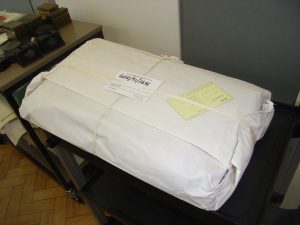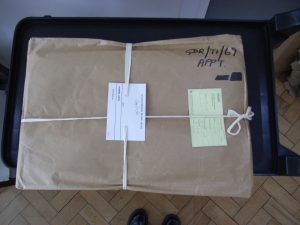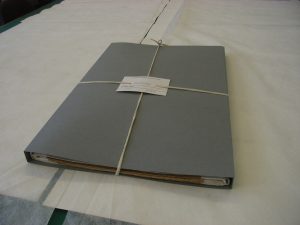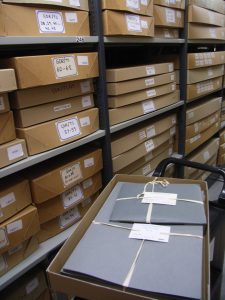At the Archives #2 What conservators did next: Safe Storage
What conservators did next
Safe Storage
In the second of her blog articles, Collections Care Conservator Rachel Wales reveals the steps taken to provide safe storage for historic tithe maps conserved for the Know Your Place project:
Rachel’s story
“The excitement is building – we are now so close to the Gloucestershire tithe maps becoming available to the world via Know Your Place. This is so very satisfying after all the years and months of effort that went into the project!
I am one of two part-time conservators here at Gloucestershire Archives. As conservators, our role is to look after hundreds of thousands of irreplaceable papers, parchments, books, maps, photographs, and files, and make them available for people to see and enjoy.
Our role
The main focus of our work here at Gloucestershire Archives has been in preparing the maps for digitization through undertaking minimal repairs of physical damage, followed by hosting the giant camera rig used by ICAM Archive Systems to capture the high-resolution digital images. But even after all this, there was still one significant task to be done – we had to safely put them into storage in our climate-controlled strongrooms This is because we still need to plan for the long-term preservation of the tithe maps.
The importance of Safe Storage
Having images available online makes them accessible to people in a way never before possible, and helps to preserve the maps by reducing the need to handle them in our searchroom, but we must still store the original material in a way that maximises their likelihood of surviving into the future, available for use by future generations.
Seizing an Opportunity
The maps had previously been kept in one of our strongrooms here, but planned building work as we develop our new Heritage Hub facilities meant that this area needed to be emptied out and the maps housed in a different strongroom. We used this opportunity to ensure that all their boxes and other protective enclosures were made of archival quality material, and that they were the right size and shape to offer good protection from light, dust, and damaging physical forces. It was also important to ensure that boxes were not over-filled, as overfilling of boxes leads to maps being crushed and creased. Making sure that the maps were clearly labelled and easily identifiable was also a priority.”
Before
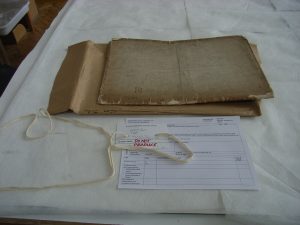
Old protective wrappers included wraps made of white fabric, and brown wrapping paper, both of which are rather flimsy and prone to deteriorate as they age.
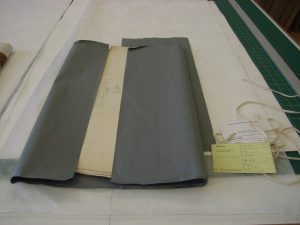
The grey paper wrapper shown here was of archival quality but too small and lightweight to offer adequate protection to the map inside.


